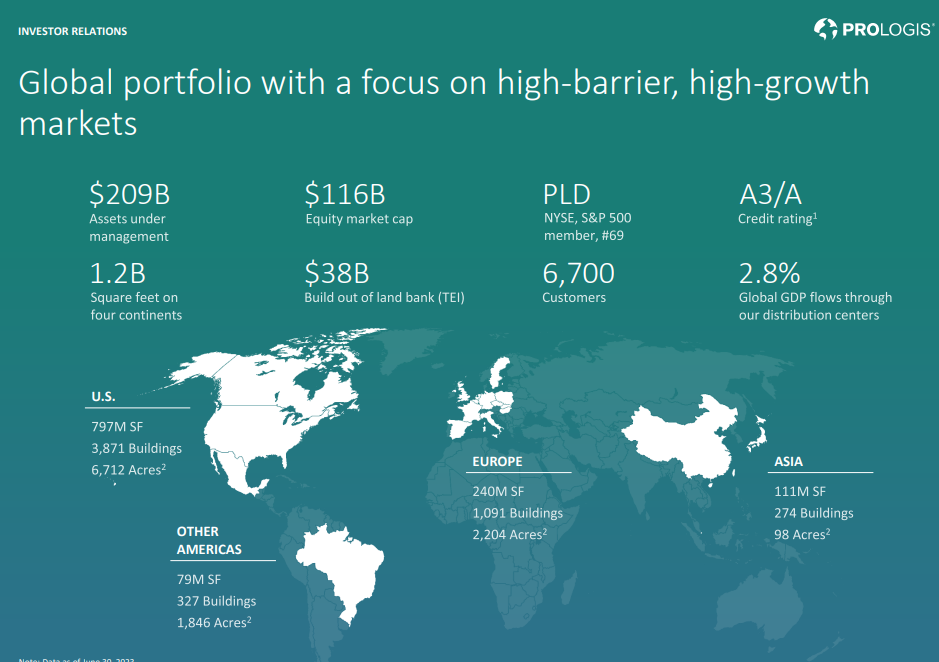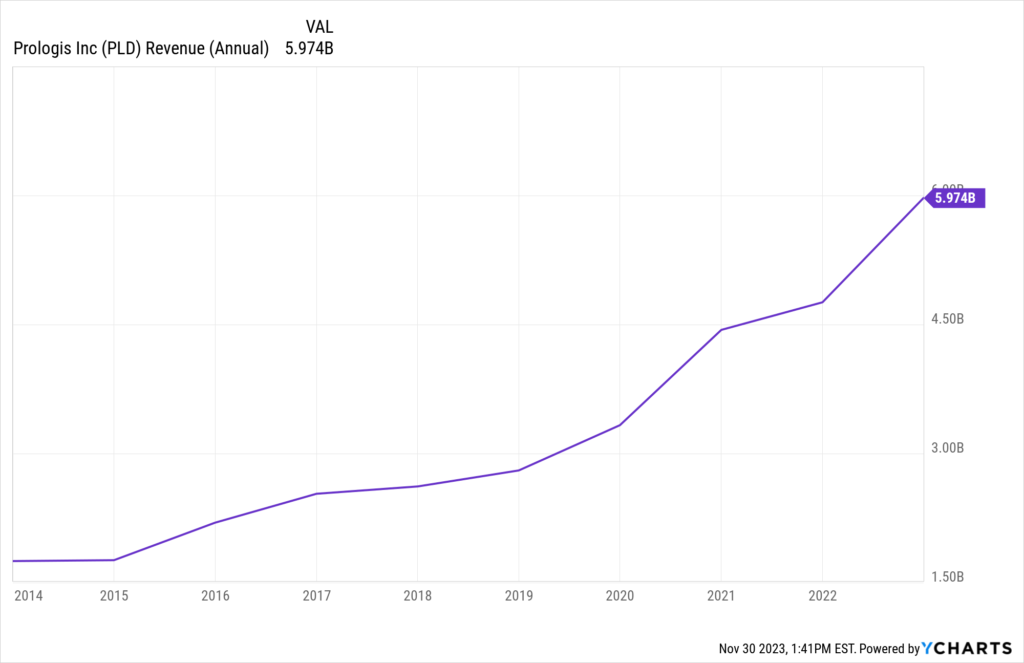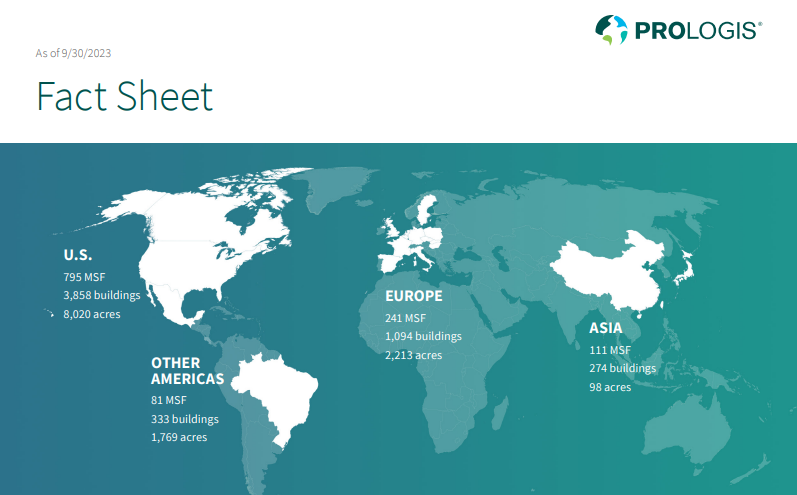One of my biggest passions in life is investing.
It’s just such a fun and productive way to spend one’s time.
There are a lot of things one can do in their spare time.
 But how many of those things will make you smarter, better, and richer?
But how many of those things will make you smarter, better, and richer?
Not many, but investing can!
Of course, that idea does require one to properly apply investing.
How to do that?
Well, I’d argue that dividend growth investing is a great way to start.
This is a long-term investment strategy whereby one buys and holds shares in world-class businesses that pay reliable, rising dividends.
There are two important aspects there that complement and reinforce one another: quality and growing dividends.
After all, truly great businesses tend to make for truly great long-term investments.
And it’s hard for anything but a truly great business to be able to afford to pay out ever-larger cash dividends to shareholders.
You can see what I mean by perusing the Dividend Champions, Contenders, and Challengers list.
This list contains a treasure trove of data on hundreds of US-listed stocks that have raised dividends each year for at least the last five consecutive years.
As you might imagine, there are a lot of special, special businesses on that list.
I’ve personally been using the dividend growth investing strategy for more than a decade now.
It’s guided me as I’ve gone about building the FIRE Fund.
That’s my real-life, real-money portfolio, and it generates enough five-figure passive dividend income for me to live off of.
Indeed, I’ve been in the very fortunate position of being able to live off of dividends since I quit my job and retired in my early 30s.
My Early Retirement Blueprint explains.
Now, a great deal of my success is owed to investing in truly great businesses.
But that’s not all.
Investing when valuations are attractive has also been instrumental to my success.
See, price is simply what you pay, but it’s value that you ultimately get.
An undervalued dividend growth stock should provide a higher yield, greater long-term total return potential, and reduced risk.
This is relative to what the same stock might otherwise provide if it were fairly valued or overvalued.
Price and yield are inversely correlated. All else equal, a lower price will result in a higher yield.
That higher yield correlates to greater long-term total return potential.
This is because total return is simply the total income earned from an investment – capital gain plus investment income – over a period of time.
Prospective investment income is boosted by the higher yield.
But capital gain is also given a possible boost via the “upside” between a lower price paid and higher estimated intrinsic value.
And that’s on top of whatever capital gain would ordinarily come about as a quality company naturally becomes worth more over time.
 These dynamics should reduce risk.
These dynamics should reduce risk.
Undervaluation introduces a margin of safety.
This is a “buffer” that protects the investor against unforeseen issues that could detrimentally lessen a company’s fair value.
It’s protection against the possible downside.
Buying undervalued high-quality dividend growth stocks and holding for the long term is a simple but effective way to build significant wealth and passive income over time.
All that said, spotting and taking advantage of undervaluation first requires one to understand valuation.
That’s exactly why my colleague Dave Van Knapp put together Lesson 11: Valuation.
Part and parcel of a series of “lessons” designed to teach the ins and outs of dividend growth investing, it provides a valuation template that can be easily applied toward just about any dividend growth stock out there.
With all of this in mind, let’s take a look at a high-quality dividend growth stock that appears to be undervalued right now…
 Prologis Inc. (PLD)
Prologis Inc. (PLD)
Prologis Inc. (PLD) is a global real estate investment trust that develops, acquires, and operates industrial and logistics facilities.
Founded in 1983, Prologis is now a $104 billion (by market cap) real estate giant that employs over 2,000 people.
The company’s property portfolio consists of more than 5,500 properties comprising a total of 1.2 billion square feet.
Its two largest markets (by properties) are the US (nearly 3,900 properties) and Europe (nearly 1,100 properties).
 Prologis leases its industrial and logistics buildings to approximately 6,700 different customers worldwide.
Prologis leases its industrial and logistics buildings to approximately 6,700 different customers worldwide.
Average occupancy for the most recent quarter was 97.1%.
There are two key components to the investment thesis here: criticality and cost.
This company’s facilities are critical to the global supply chain.
The company estimates that $2.7 trillion in economic value of goods flow through its distribution centers each year, representing 2.8% of the world’s GDP.
Put simply, goods fail to move without the employment of these logistics facilities.
Yet, despite the critical nature of these buildings, they form a low portion of total supply chain costs.
Per the 2022 CBRE Supply Chain Advisory, when looking at the distribution of supply chain costs, fixed costs (including rent) make up 3% to 6% of the total (versus 45% to 70% from transportation).
When something is both critical and low in cost, it’s highly likely to stay in place and command higher prices over time.
In addition, as the global supply chain grows and spreads out, this naturally benefits the likes of Prologis.
And with the multi-decade trend of rising e-commerce still playing out, warehouses will remain a very important cog in the machine.
This REIT is positioned very well for continued revenue, profit, and dividend growth for years to come.
Dividend Growth, Growth Rate, Payout Ratio and Yield
Already, Prologis has increased its dividend for 10 consecutive years.
The 10-year dividend growth rate is 10.9%.
 Better yet, there’s been an acceleration in dividend growth over the last several years.
Better yet, there’s been an acceleration in dividend growth over the last several years.
The five-year dividend growth rate is 12.4%, and the three-year dividend growth rate is 14.2%.
That’s a lot of dividend growth for a REIT and just goes to show how great and unique Prologis is and has been.
Most REITs that I know of are primarily income plays, and they’re growing dividends at more meager rates that are in the low-single-digit area.
The stock also offers a market-beating 3.1% yield, which is lower than what your typical REIT features, but there’s no major income sacrifice being made here.
This yield, by the way, is 70 basis points higher than its own five-year average.
With a payout ratio of 62.3%, based on midpoint guidance for this year’s Core FFO/share, Prologis has a well-covered dividend positioned for more growth ahead.
In my view, prospective Prologis investors are looking at a very compelling mix of yield and growth here.
Revenue and Earnings Growth
As compelling as these metrics might be, many of them are looking in the rearview mirror.
However, investors must always look through the windshield, as today’s capital is being risked for the rewards of the future.
That’s why I’ll now build out a forward-looking growth trajectory for the business, which will be highly useful when the time comes later to estimate fair value.
I’ll first show you what the business has done over the last decade in terms of its top-line and bottom-line growth.
And I’ll then reveal a professional prognostication for near-term profit growth.
Amalgamating the proven past with a future forecast in this manner should give us what we need to approximate where the business could be going from here.
Prologis moved its revenue from $1.8 billion in FY 2013 to $6 billion in FY 2022.
That’s a compound annual growth rate of 14.3%.
 While that’s very strong top-line growth, it’s somewhat misleading.
While that’s very strong top-line growth, it’s somewhat misleading.
When it comes to REITs, it’s imperative to look at profit growth on a per-share basis.
That’s because REITs use debt and equity to fund growth, as they’re legally required to distribute at least 90% of their taxable earnings to shareholders.
This circles back around to the point I made on REITs being income plays, and the limitations around internal funding for growth means tapping equity (by issuing shares) results in dilution.
That tends to create distortion between absolute revenue growth and profit growth relative to shares outstanding.
Also, when assessing profit for a REIT, we want to use funds from operations instead of normal earnings.
FFO (or adjusted FFO) is a measure of cash generated by a REIT, which adds depreciation and amortization expenses back to earnings.
Prologis grew its Core FFO/share from $1.65 to $5.16 over this 10-year period, which is a CAGR of 13.5%.
That’s admirable.
I often see major disconnects between top-line growth and bottom-line growth when it comes to REITs, but Prologis put together similar growth on both ends.
Really impressive stuff out of Prologis.
Looking forward, CFRA currently has no three-year CAGR projection for the REIT’s FFO/share.
That’s unfortunate, as I do like to compare the proven past up against a future forecast in order to roughly gauge what the growth trajectory might look like.
That said, we can still piece a bit of it together.
Prologis recently released guidance for FY 2023, calling for Core FFO/share to be between $5.58 and $5.60.
At a $5.59/share midpoint, that would represent 8.3% YOY growth compared to FY 2022.
I think it’s remarkable that Prologis is putting up high-single-digit growth during a very challenging environment for commercial real estate.
Says a lot about the resiliency and durability of the enterprise, as well as the relentless demand for these industrial properties.
I’m not sure that it would be prudent to expect Prologis to continue putting up double-digit FFO/share growth, if for no other reason than the fact that it’s a much bigger REIT today than it was a decade ago.
Prologis is starting the next decade with a much larger base.
But what investors may lose out on in terms growth, they probably get back in terms of safety.
I say that because this is an industrial property empire, and it’s hard to imagine anything taking it down at this point.
I like growth as much as the next investor, but there’s something to be said about the idea of 5,500 properties making money while you sleep well.
Overall, I don’t see why Prologis can’t put out high-single-digit FFO/share growth from here, which would offer room for similar dividend growth.
When starting off with a 3%+ yield, that’s not bad at all.
Financial Position
Moving over to the balance sheet, Prologis has a rock-solid financial position.
The REIT had just under $24 billion in long-term debt as of the end of last fiscal year, which is relatively modest for its $104 billion market cap.
A common measure for a REIT’s financial position is the debt/EBITDA ratio, which is 4.2 for Prologis.
I usually see REITs range from 3 to 7 on this ratio, so Prologis is definitely on the lower end.
I like that.
As of Q3 FY 2023, the company’s weighted average interest rate on its share of total debt was 2.9%, with a weighted average term of 9.5 years.
It’s worth noting that Prologis has no significant debt maturities until 2026.
In addition, the REIT has excellent credit ratings that are well into investment-grade territory: A3, Moody’s; A, S&P.
Overall, Prologis is one of the highest-quality REITs out there.
The fundamentals here are second to none.
And with economies of scale, switching costs, and entrenched infrastructure, the company does benefit from durable competitive advantages.
Of course, there are risks to consider.
Litigation, regulation, and competition are omnipresent risks in every industry.
A REIT’s capital structure relies on external funding for growth, which exposes the company to volatile capital markets (through equity issuances) and interest rates (through debt issuances).
Adding to the rate conversation, higher rates can hurt this particular business model twice over: Debt becomes more expensive to take on and service, and equity can become more expensive (because income-sensitive investors have alternatives, which puts downward pressure on the stock price).
Prologis has exposure to the global economy, and any broad economic slowdown would naturally reduce demand for logistics (via less movement of goods).
The type of real estate Prologis specializes in (logistics/warehouses) is simplistic, and it’s not difficult for competitors to come in and build out warehouses on acquired land.
 Being international, Prologis has exposure to currency exchange rates and geopolitics.
Being international, Prologis has exposure to currency exchange rates and geopolitics.
Any major changes in commerce, especially e-commerce, would impact Prologis.
These risks are mostly fairly standard for a REIT, yet this REIT is anything but standard.
And with the stock down more than 30% from all-time highs, the valuation is now a long way from standard…
Stock Price Valuation
The stock is trading hands for a P/FFO ratio of 20.2.
That’s based on midpoint guidance for this year’s Core FFO/share.
Being somewhat analogous to a P/E ratio on a normal stock, that gives you a rough idea of where Prologis is at.
Another way to look at it is the cash flow multiple.
The P/CF ratio of 19.3 is well off of its own five-year average of 27.7.
This stock has typically commanded a heavy premium, but that premium is now pretty much gone.
Also, the yield, as noted earlier, is significantly higher than its own recent historical average.
So the stock looks cheap when looking at basic valuation metrics. But how cheap might it be? What would a rational estimate of intrinsic value look like?
I valued shares using a dividend discount model analysis.
I factored in a 10% discount rate and a long-term dividend growth rate of 7%.
That dividend growth rate looks low or high, depending on how you’re approaching it.
On one hand, it’s quite high for a REIT, and I very rarely allow for a higher rate of growth when dealing with a REIT.
After all, a lot of REITs are heavily indebted and grow slowly.
They tend to be income plays.
However, Prologis has shown a rare amount of growth in REITdom.
And the balance sheet isn’t as leveraged as what many other REITs are dealing with.
The dividend growth rate I’m factoring in is much lower than the company’s demonstrated dividend growth over the last three, five, and ten years.
Also, guidance for this year is calling for high-single-digit YOY Core FFO/share growth.
I don’t see why Prologis can’t put up high-single-digit dividend growth from here.
The DDM analysis gives me a fair value of $124.12.
The reason I use a dividend discount model analysis is because a business is ultimately equal to the sum of all the future cash flow it can provide.
The DDM analysis is a tailored version of the discounted cash flow model analysis, as it simply substitutes dividends and dividend growth for cash flow and growth.
It then discounts those future dividends back to the present day, to account for the time value of money since a dollar tomorrow is not worth the same amount as a dollar today.
I find it to be a fairly accurate way to value dividend growth stocks.
I don’t believe my valuation model was overly aggressive, yet the stock comes out looking decently cheap anyway.
But we’ll now compare that valuation with where two professional stock analysis firms have come out at.
This adds balance, depth, and perspective to our conclusion.
Morningstar, a leading and well-respected stock analysis firm, rates stocks on a 5-star system.
1 star would mean a stock is substantially overvalued; 5 stars would mean a stock is substantially undervalued. 3 stars would indicate roughly fair value.
Morningstar rates PLD as a 4-star stock, with a fair value estimate of $124.00.
CFRA is another professional analysis firm, and I like to compare my valuation opinion to theirs to see if I’m out of line.
They similarly rate stocks on a 1-5 star scale, with 1 star meaning a stock is a strong sell and 5 stars meaning a stock is a strong buy. 3 stars is a hold.
CFRA rates PLD as a 5-star “STRONG BUY”, with a 12-month target price of $131.00.
Very tight consensus this time around, and I came out within pennies of where Morningstar is. Averaging the three numbers out gives us a final valuation of $126.37, which would indicate the stock is possibly 11% undervalued.
 Bottom line: Prologis Inc. (PLD) is one of the highest-quality REITs out there. It’s benefiting from an expanding global supply chain and the rising trend of e-commerce. Its property portfolio has unrivaled size, scale, and geographic diversification. With a market-beating yield, double-digit dividend growth, a moderate payout ratio, 10 consecutive years of dividend growth, and the potential that shares are 11% undervalued, long-term dividend growth investors looking to increase their exposure to commercial real estate must have Prologis on their radar.
Bottom line: Prologis Inc. (PLD) is one of the highest-quality REITs out there. It’s benefiting from an expanding global supply chain and the rising trend of e-commerce. Its property portfolio has unrivaled size, scale, and geographic diversification. With a market-beating yield, double-digit dividend growth, a moderate payout ratio, 10 consecutive years of dividend growth, and the potential that shares are 11% undervalued, long-term dividend growth investors looking to increase their exposure to commercial real estate must have Prologis on their radar.
-Jason Fieber
P.S. If you’d like access to my entire six-figure dividend growth stock portfolio, as well as stock trades I make with my own money, I’ve made all of that available exclusively through Patreon.
Note from D&I: How safe is PLD’s dividend? We ran the stock through Simply Safe Dividends, and as we go to press, its Dividend Safety Score is 61. Dividend Safety Scores range from 0 to 100. A score of 50 is average, 75 or higher is excellent, and 25 or lower is weak. With this in mind, PLD’s dividend appears Safe with an unlikely risk of being cut. Learn more about Dividend Safety Scores here.
Source: Dividends & Income




